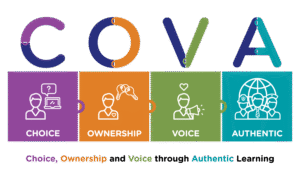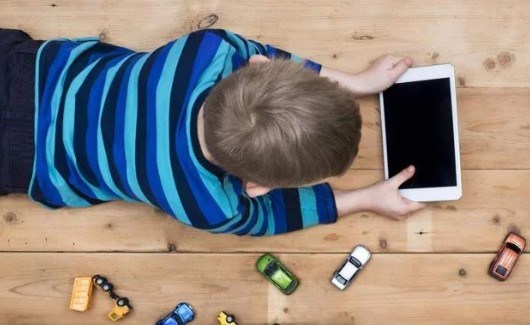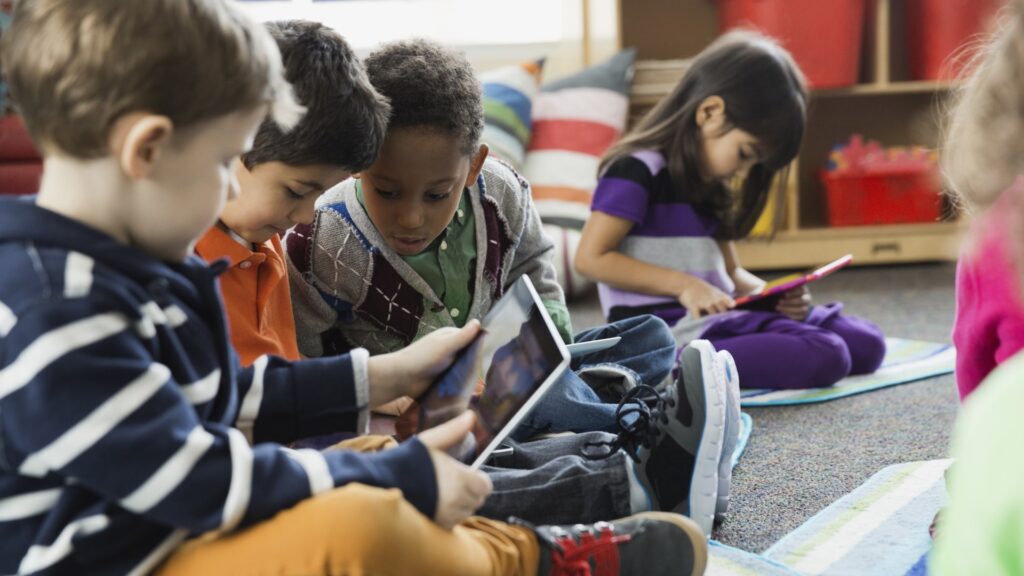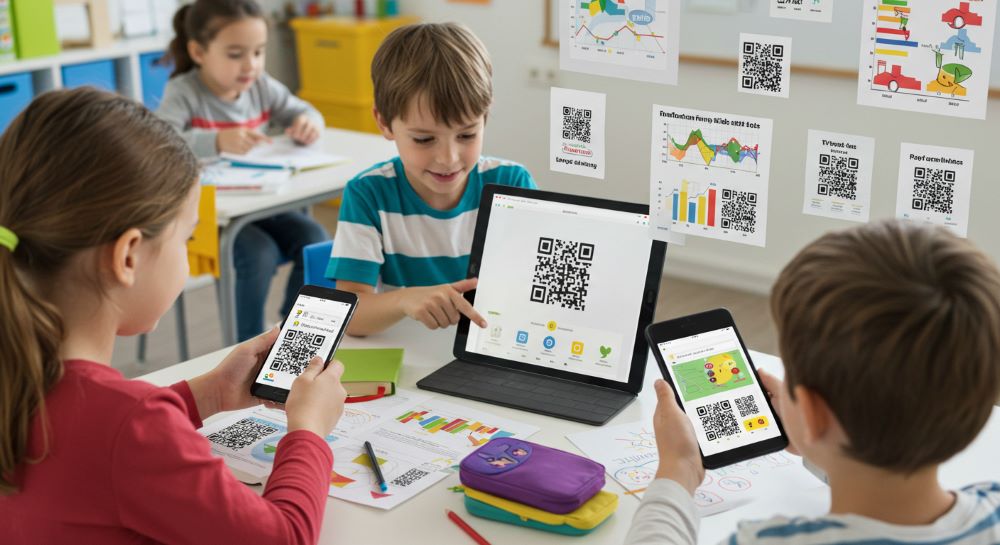Learn, Transform & reflect
In this section, I share some of the most meaningful reflections I developed throughout my Master’s program in Applied Digital Learning. Each post captures a moment of authentic learning, a powerful question, or an idea that helped transform my teaching practice. I write from my experience as a kindergarten teacher, with the desire to connect, inspire, and grow alongside other passionate educators.

“Learning is not attained by chance; it must be sought for with ardor and attended to with diligence.”
Abigail Adams
EDLD-5303 / EDLD-5313 Summer – Compilation

“We must design learning environments that invite creativity, reflection, and ownership.”
— Dwayne Harapnuik
Designing My Learning Journey: Reflections from EDLD 5303 and 5313
As I moved into the second phase of my journey in the Applied Digital Learning program, I could feel that the expectations were rising. Compared to my first courses, these two EDLD 5303: Applying Educational Technology – ePortfolio with Dr. Harrison, and EDLD 5313: Creating Significant Learning Environments with Dr. Johnson challenged me in deeper ways. And yet, they helped me continue building on the foundation I started during the spring semester. These classes asked more from me, but they also gave me tools that will stay with me as I grow as a teacher and learner.
5303: A Window Into the Digital World
EDLD 5303 introduced me to a world of digital tools and creative expression. Exploring new resources was both exciting and overwhelming. I couldn’t rely on what I already knew I had to try tools I had never used before, from AI-based video creators to interactive note-taking platforms. As a kindergarten teacher, I often think about how tools can engage young learners. This assignment helped me discover that even the smallest digital detail an interactive visual, a playful sound, or a colorful interface can make a big difference in how students learn and connect.
Creating My ePortfolio: A Personal Victory
One of the biggest achievements for me in this class was starting my ePortfolio. I had never created a website before, and just the idea of building something so public made me nervous. But slowly, with each blog post and page, I began to feel more confident. Now I see my ePortfolio as a living space a place where I can share my growth, reflect on what I’ve learned, and let my voice as a teacher shine through. I’ve even started adding links to classroom projects and reflections that matter to me. It was a challenge, yes but now it feels like a celebration of my journey.
Blogging with Purpose
Learning how to write blog entries was another powerful experience. At first, I didn’t know where to begin. What could I share that would be meaningful? But then I realized: everything I live in my classroom, every success and struggle, can be a topic for reflection. Blogging helped me see my everyday teaching experiences as rich learning moments that are worth documenting and sharing. I now understand that writing is not just for academic tasks it’s a tool for professional voice, collaboration, and advocacy.
5313: Designing Learning with Heart and Intention
In EDLD 5313, I was introduced to a deeper way of thinking about learning. We explored the new culture of learning, the alignment of goals and activities, and the powerful Understanding by Design (UbD) framework. This class helped me give structure and meaning to my innovation project, Tech Time: My Time in Kindergarten. I revisited my plan and shaped it more intentionally, thinking not just about what students do but what they understand, and how they grow through their experiences.
From Student Goals to Learning Environments
The concept of designing significant learning environments opened my eyes to the importance of purpose in everything we do. It’s not enough to introduce technology or follow a schedule. We must intentionally align our objectives, activities, and assessments in ways that help children feel confident, curious, and independent. In kindergarten, these ideas are especially important because the way we set up the learning environment shapes how students see themselves as learners from the very beginning.
Collaboration, Leadership, and Self-Discovery
Both courses gave me opportunities to work with peers, exchange ideas, and take on leadership roles. During our leadership simulation case study, I learned how to navigate group dynamics, adapt to different personalities, and support collaboration even when schedules were tight or ideas clashed. These moments reminded me of my role not only as a teacher, but as a facilitator and listener. They also helped me discover new strengths in myself that I hadn’t recognized before.
Final Reflection
These courses pushed me out of my comfort zone just like the first ones did but in new and deeper ways. I had to be creative, vulnerable, and willing to try things I had never done before. But they also reminded me that meaningful learning is not about perfection; it’s about presence, intention, and growth. I’m proud of what I’ve built so far, and I’m even more excited for what’s still to come. I carry all these lessons back to my classroom, knowing that my students benefit every time I grow as an educator.
References
- Harapnuik, D. (2022). Creating significant learning environments. https://www.harapnuik.org
- Wiggins, G., & McTighe, J. (2005). Understanding by design (Expanded 2nd ed.). ASCD.
- Thomas, D., & Brown, J. S. (2011). A new culture of learning: Cultivating the imagination for a world of constant change. CreateSpace.
- Equilibria. (2024). E-Colors in education: Understanding personalities for better collaboration. https://www.equilibria.com/
EDLD-5302 / EDLD- 5305 Spring – Compilation

“When learners are given choice, ownership, and voice through authentic learning opportunities, they thrive.”
— Dwayne Harapnuik
Growing from the First Step: My Experience in EDLD 5302 and 5305
When I began this Master’s in Applied Digital Learning, I was filled with excitement… and honestly, a lot of nerves. Everything was new platform, new terms, new expectations. As a kindergarten teacher, I was used to guiding my students through learning, but now I had to let myself be guided, step out of my comfort zone, and face technologies I had never used before. Looking back, I can say that the first two courses EDLD 5302: Concepts of Educational Technology with Dr. Harrison and EDLD 5305: Disruptive Innovation in Technology with Dr. Johnson were more than just an introduction. They were a strong foundation for everything that was coming next.
Learning About Myself to Learn How to Lead
In EDLD 5302, we spent time getting to know ourselves as learners and leaders. One of the most eye-opening moments was taking the personality and leadership assessments. I discovered that my E-Colors profile as a Socializing Thinker helps me connect with others and get excited about new projects. But I also learned the importance of giving space to other voices in a team. These reflections helped me grow not only as a student, but also as an educator and team member in my school (Equilibria, 2024).
Learning Manifesto: Believing in Change
Creating my Learning Manifesto was one of the most meaningful assignments. It gave me the chance to reflect on my philosophy as a teacher. I believe technology is an opportunity not a goal in itself. My role is to guide my students, even the youngest ones, in using digital tools with purpose. I don’t need to have it all I just need to know how to make the most of what I do have. That mindset later became the heart of my innovation proposal (Campbell, 2009).
Case Study: When Theory Meets Practice
Working on a real-life technology case study allowed me to connect everything I was learning to actual classrooms. I explored how different school districts implement digital learning strategies and began thinking about my own reality. What could work with my kindergarteners? How can I adapt best practices to a setting where resources are limited?
Innovating from Need: EDLD 5305
In our course on Disruptive Innovation, I explored ideas I had never encountered before: disruptive models, blended learning, personalized instruction… At first, it all felt far from my world of young learners. But I soon realized that true innovation often comes from a real need. And I had one: I wanted my students to be more independent at the technology center (Christensen et al., 2011).
From Idea to Action: My Innovation Plan
This course guided me step by step in building my innovation plan. I started with the Innovation Proposal Letter, where I shared my vision of a more engaging, student-led technology center. Then, we developed the online implementation and final plan, including QR codes, visual routines, and teacher support systems. Each assignment made my idea feel more real. I began to believe that I could truly transform my classroom into a space for independent, meaningful learning.
Learning Through Collaboration
At first, I was nervous about working in collaborative groups. But over time, I learned the value of learning from others. Our discussions, Padlets, and shared reflections helped me see new perspectives. I also let go of my fear of making mistakes and learned to trust myself and my classmates more.
Final Reflection
These first courses didn’t just teach me tools and theories they helped me rediscover myself as a learner. They pushed me to think beyond the daily routines of my classroom. I now understand that innovation isn’t only for tech experts. It’s also for kindergarten teachers like me teachers who want to grow and give their best to their students. I’m ready to keep learning, because this journey has only just begun.
References:
- Campbell, G. (2009). A personal cyberinfrastructure. EDUCAUSE Review, 44(5), 58–59. https://er.educause.edu/articles/2009/9/a-personal-cyberinfrastructure
- Christensen, C. M., Horn, M. B., & Johnson, C. W. (2011). Disrupting class: How disruptive innovation will change the way the world learns (2nd ed.). McGraw-Hill.
- Equilibria. (2024). E-Colors in education: Understanding personalities for better collaboration. https://www.equilibria.com/
EDLD-5304 / EDLD- 5317 Fall first half Term – Compilation

“Technology should not be the focus; learning should. When used effectively, technology disappears into the learning environment.”
— Dwayne Harapnuik
The ADL program has transformed the way I see myself as an educator. Each course has deepened my understanding of leadership, innovation, and the power of reflection. This page documents my journey through courses like EDLD 5304 and 5317, showing how theory, creativity, and practice come together to shape my vision for digital learning.
Introduction
This term was a powerful journey of connection between leadership and digital learning. Through EDLD 5304 – Leading Organizational Change and EDLD 5317 – Creating Digital Environments, I learned that meaningful innovation is not only about using technology but also about building the right culture to sustain it. Both courses guided me to view myself not just as a teacher who integrates tools, but as a reflective leader capable of inspiring change and designing environments where students and colleagues can thrive.
What Worked Well
In EDLD 5304, I discovered how the 4 Disciplines of Execution (4DX) and the Influencer Model can transform an idea into a sustainable habit. Developing my Wildly Important Goal (WIG) for Tech Time: My Time in Kindergarten helped me translate vision into measurable action. By identifying lead measures, creating scoreboards, and establishing weekly accountability, I saw how small, consistent steps build momentum for long-term change. The Influencer Model reinforced this by reminding me that motivation and ability must align across personal, social, and structural levels to achieve real behavioral transformation (Grenny et al., 2013).
In EDLD 5317, I focused on the design of digital learning environments that empower students through voice, choice, and ownership (Harapnuik, 2015). I learned to connect cognitive processes such as prediction, modeling, and evaluation to early childhood practices. Implementing QR codes, iPads, and digital math centers allowed me to observe students developing autonomy and curiosity. When technology is used with clear purpose, it disappears into the learning experience, leaving curiosity and collaboration at the center (Harapnuik, 2015).
Areas for Growth
One area I continue to strengthen is time management during implementation and reflection. Balancing leadership planning from 5304 with the creative design work of 5317 required discipline and flexibility. Another growth point is collecting and analyzing student outcome data to support my claims. As Dr. Bellard suggested, I have begun documenting engagement rates, task completion, and peer collaboration as early evidence of impact. These indicators will be essential as I refine Tech Time and scale it to a broader audience.
Reflections on Assignments
Each major project contributed to my understanding of innovation from two complementary angles leadership and design:
Installing 4DX with Your Organization – taught me how to focus on what truly matters and maintain a cadence of accountability.
Influencer Strategy – helped me identify key motivators that drive sustainable change in teachers and students.
Publication Outline & Rough Draft – guided me to connect theory with classroom practice through authentic storytelling.
Media Project – allowed me to communicate my ideas visually and reach others beyond academic writing.
Publication Final Draft – integrated peer and instructor feedback, measurable outcomes, and reflection on student independence.
Through these assignments, I realized that leadership without learning design lacks soul, and design without leadership lacks sustainability. Together, they form the foundation of my digital learning philosophy.
Collaboration and Contribution
Collaboration was central to both courses. In 5304, my peers provided constructive feedback that helped me refine the clarity of my 4DX plan and apply realistic goals. In 5317, my discussion partners shared perspectives on writing for publication and encouraged me to find my professional voice. I learned that feedback is not criticism it is the mirror that helps us see possibilities we might miss alone. By offering insights from an early-childhood lens, I contributed practical classroom examples to our collective learning community.
Integration and Synergy
What makes these two courses powerful together is the synergy between vision and practice. From 5304, I learned how to lead change; from 5317, I learned what kind of learning environments make that change meaningful. The leadership frameworks gave structure to my ideas, while the publication process gave them life and purpose. This integration has allowed me to become more intentional, aligning classroom innovation with sustainable leadership habits.
As Dr. Dwayne Harapnuik reminds us, “Technology should not be the focus; learning should. When used effectively, technology disappears into the learning environment.” His words connect both courses perfectly leadership ensures that innovation lasts, while digital design ensures that learning remains at the center.
Conclusion
This dual-course experience strengthened my identity as a creative leader and reflective designer. I now understand that meaningful innovation begins with people, not programs. Leading with empathy, modeling curiosity, and empowering students to own their learning are at the heart of sustainable change. As I continue my graduate journey, I will keep cultivating environments where teachers and students can explore, make mistakes, and grow because, as Harapnuik (2015) says, “When learners have voice and choice in their learning, they take ownership and develop a deeper understanding that leads to transformation.”
Both EDLD 5304 and EDLD 5317 have helped me see that my innovation, Tech Time: My Time in Kindergarten, is not just a classroom project it is a living example of leadership, reflection, and digital empowerment in action.
References
Grenny, J., Patterson, K., Maxfield, D., McMillan, R., & Switzler, A. (2013). Influencer: The new science of leading change (2nd ed.). McGraw-Hill.
Harapnuik, D. (2015). COVA and CSLE: Empowering learners through voice and choice. Lamar University. https://www.harapnuik.org/?page_id=5784
Papert, S. (1993). The children’s machine: Rethinking school in the age of the computer. Basic Books.
Vygotsky, L. S. (1978). Mind in society: The development of higher psychological processes. Harvard University Press.